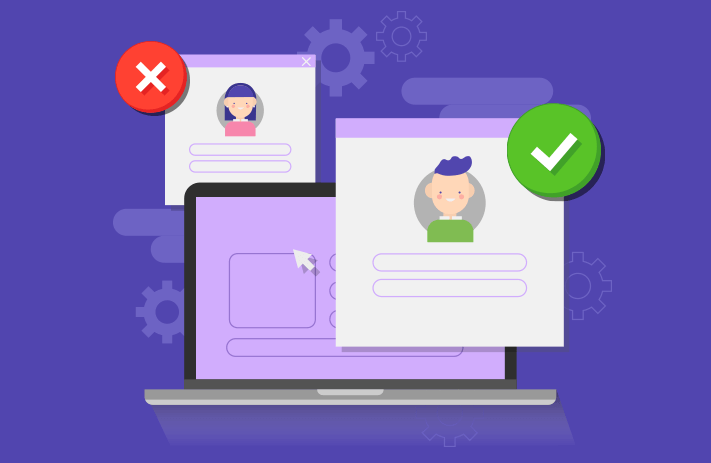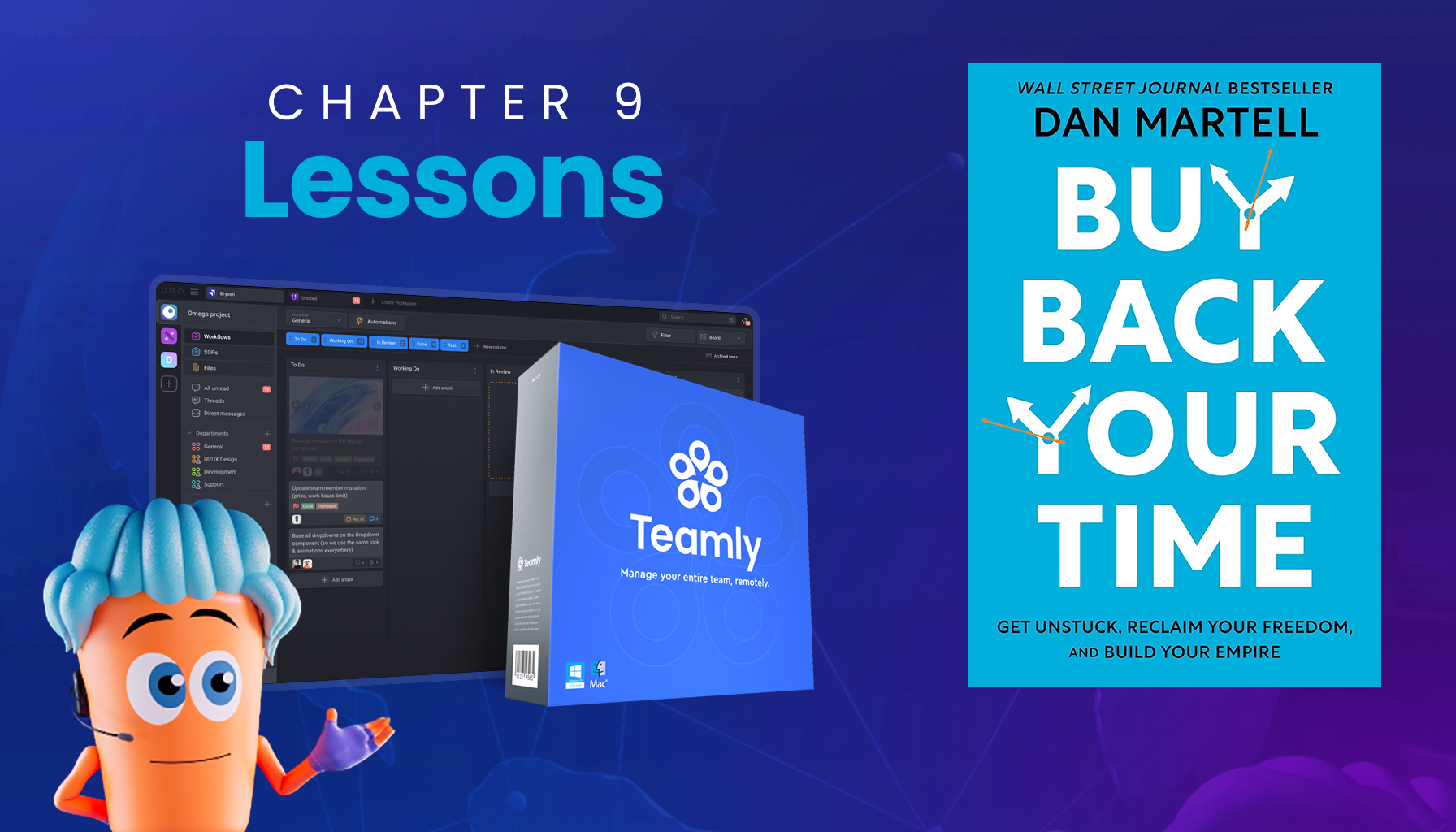
Click the button to start reading
Making Ties that Bind: The Professional Guide to Onboarding and Offboarding
We’ve all known those people who manage to maintain strong bonds with pretty much every person they’ve met since kindergarten. Every time they turn around, they’re shaking hands with an old friend, and each year they send out a stack of Christmas cards that’s over two feet high.
It isn’t hard to imagine that amassing this kind of social capital gets people places. Take Bill Clinton, for example. In his biography My Life, he attributes all of his success to his friends.
A business runs on similar principles. Producing and functioning at a high level is dependent on building strong relationships with employees.
Any team leader has felt the thrill of watching a skilled team work collaboratively towards a goal. And has also felt a sickening shudder when these same employees move on to greener pastures.
Things being as they are, it’s hard these days for any one employee to sit still for too long. As any recruiter can attest, retaining a great employee is just as hard as finding one. And receiving a letter of resignation means the devastating loss of a wealth of acumen and knowledge.
It’s easy to pine for a business that draws the best and the brightest, with scores of former employees writing glowing, five-star reviews on Glassdoor.
This needn’t simply be a fantasy. The fact is, just like friendships, any business can build a dedicated team and amass a stockpile of social capital.
It requires some strategy. A central component entails mastering the craft of onboarding and offboarding. Let’s look at how to approach these critical moments, and so garner a reservoir of talent and goodwill for your business.

Part I: Onboarding
Hiring a new employee is not nearly so simple as finding someone with the right skill set, then showing them to a desk equipped with a new computer and phone.
Onboarding is the process of integrating a new employee into a business. It entails teaching about the company culture, explaining the responsibilities of the position, providing the necessary training, and introducing the employee to the team.
A sensible approach to onboarding helps a business retain a staff of dedicated employees.
Employee Buy-in Strategies
Here is how Igor Epshteyn, CEO of Coherent Solutions, reflects on the role of employees in his business: “The people is the growth of the company.…..our services are purely based on people: their skills, education and everything else. People is the fuel, the engine that allows the company to grow.”
Epshteyn’s perspective certainly isn’t an isolated one. A recent study with property managers found that one in three cited chronic turnover, onboarding and training as serious impediments to their company’s growth.
Since a dedicated team is so critical, it’s really important for a leader to understand how to go about creating one. Much of the solution has to do with building bridges at critical moments along the employee relationship arc. Using rapport-building techniques during the first days on the job helps as well.

Seize Critical Moments
Wipro, a call center in Atlanta, struggled with rampant turnover for years. They tried everything in the book to keep employees from walking out the door. Yet, try as they might, staff continued to cycle through faster than race cars at the Indy 500.
Until they came upon one simple onboarding experiment.
In the experiment, one group of new hires received an hour of standard, run-of-the mill training. Within this hour, job duties were explained, a star employee was highlighted, and everyone was given a sweatshirt with the company name on it.
In the second group, the initiation hour had a much different approach. The trainees were asked questions about themselves, such as “Tell me what your best day looks like?” and “Tell me what your worst day looks like?” and “What would you bring with you on a desert island, if you could only bring one thing?”
At the end, each trainee was given a sweatshirt with their own names written on it.
After seven months, Wipro checked in with the two groups, and found that retention in the second group was 270% higher than in the first! It turns out that soft skills really make or break a company after all.
What exactly happened in the Wipro experiment?
The company seized on a critical moment in the employee relationship journey, and crafted a process to make that moment highly personal. This resulted in employees feeling bonded with the business and staying on board.
Critical moments are pivotal points in a relationship that define how it progresses. Some of these moments include introductions, first arguments, and departures.
Approaching these key moments strategically makes it possible to shape the arc of the employee relationship.
During her first weeks on the job, a new hire is still uncertain about the decision to join the company. Assuage her concerns. Let her know that you see her as an individual, believe she has something valuable to contribute, and are glad to have her on board
Meeting her in this critical moment serves to cement the bond.

Use Rapport-Building Techniques
When an employee first joins a company, she feels very much like a fish out of water. The culture is foreign and everyone is new.
Rapport is deliberate engagement. It means putting on a certain role in order to solicit a desired outcome in a given situation.
Here are a few methods for putting a new hire at ease, drawing her out and making her feel settled.
1. Create a Welcoming Environment
A hospitable environment makes an employee feel welcome from the get-go. This entails making sure the desk is set up when the employee arrives, complete with a computer and a suitable chair.
Additionally, it’s important that the employee is properly welcomed, offered something to eat or drink, and given a tour of the facilities.
2. Find Common Ground
Breaking the ice and starting things off with some friendly banter sets a positive tone. Finding something you have in common with the employee is a sure way to draw them out. Things like pets, hobbies, or a favorite sports team are great topics for discussion.
Allowing her to make conversation on a subject in her wheelhouse makes the new hire feel confident and at ease in the foreign environment.

3. Imitate Body Language
Body language speaks volumes about the dynamics of a relationship.
Take seating, for example. Sitting across from someone communicates authority and command and control. Whereas, sitting alongside someone communicates companionship. Imitating gestures, including crossed arms or crossed legs, gives off signals of simpatico.
While going over paperwork and showing the new hire the ropes, making an effort to communicate friendly body language sends a warm, welcoming tone.

Employee Onboarding Checklist
The process of acclimating a new hire to a company’s culture, people, processes, and methods of communication, as well as completing any on-the-job training, really takes some time.
It may take sixty to ninety days until a new employee is fully integrated and can independently perform in her position. And that time certainly isn’t spent sitting at a desk, twiddling her thumbs waiting for a computer to arrive.
A well thought-out onboarding system makes the process as efficient as possible. Let’s go over a checklist of what to do in the onboarding process, and when.
Before the Hire
Usually, there’s at least two weeks between when an employee is hired and when she starts. This buffer provides a window for getting hardware set up.
1. Set-Up Technology
Tools. The first step to setting up equipment for the new hire is finding a desk and the proper hardware. What computer will she use, and which software? This is the time to purchase any necessary software licenses.
Create Accounts. Next, it’s necessary to set up any accounts for internal communication, such as email.
Configure Workstation. Once the proper software has been purchased, it’s time to create a login and install it.
Test. And finally, be sure to test everything. Run a trial login to make sure there are no weird pop-ups and everything is good to go.
Although this looks like four simple steps, the process really takes several days. In order to have the computer ready and waiting for the employee’s first day, it’s necessary to begin this process at least ten days in advance.
2. Maintain Contact
Touching base with the employee during this time keeps them in the loop. Particularly if the gap between the hire and start date is longer than a few weeks, it’s good to let them know you’re enthused they’ve made the decision to come on board.

First 30 Days
With all the basics in place, you’re ready to bring the employee in and begin training.
For the first thirty days in a company, the new hire is getting her feet wet and learning the ropes. For this period to be fruitful, it’s important to not have any performance expectations during this time. Full immersion into orientation is best, as the learning curve is steep.
Here is what the new hire should accomplish during the first thirty days.
1. Read the Company Handbook
Whether a handbook or a series of videos, make sure the employee digests a thorough explanation of the company’s culture, history, values and processes.
2. Understand Ideal Client and Competitive Edge
Similarly, make sure the employee has a keen understanding of the client or market the company seeks to reach, as well as its position in the industry, and its competitive edge.
3. Sign Essential Documents
Tax forms need to be filled out and signed, as well as COBRA and health insurance documents.
Be sure to go over any non-disclosure agreements the company has, as well as any offboarding agreements around returning technology and equipment.
Although these forms can be complicated and lengthy, it’s critical to provide a thorough verbal explanation of these agreements, in addition to the written document.
4. Meet with a Mentor
Assigning the new-hire to a mentor provides her with a go-to person for all sorts of questions. This “work-place buddy” is a source of companionship and emotional support during this period of transition.
It’s a good idea for the mentor and new hire to meet 1:1 for the first four to six weeks, and to touch base periodically after that.
5. Learn Core Tools
Provide the employee with any necessary software training, as well as instructions on how to use internal email and messaging systems.
6. Sit-in on Meetings
Have the new-hire participate in presentations, meetings and brainstorming sessions. This provides some necessary context for everything she went over in the handbook. At this point, she’s mostly suited to observe and witness the culture in-action.
7. Understand Workflow
Be sure the new hire understands the roles of the various departments, as well as any work that’s outsourced to freelancers. A visual diagram makes this information memorable and quickly digested.

Intermediate: 31-60 Days
Now that she’s dipped her toes in the water, it’s time to get her out of the shallow end. The interim phase of onboarding is about engaging in collaborative team processes and becoming versed in job duties.
1. Perform Rudimentary Tasks
Have the new hire perform some of the basic tasks in the position. For example, an employee who’s hired on as a long-form copywriter might write a few blog posts during this time.
2. Meet for 1:1 Lunches
In order to be integrated into the business, it’s important for the new-hire to meet with employees in different departments. This allows her to engage, connect, and have a better understanding of the office dynamics and various roles and responsibilities.
3. Communicate Frequently
It’s important that the manager meet 1:1 with the new hire frequently, to solicit and provide feedback, and make sure all concerns are addressed.
Final 61-90 Days
Although she may still feel a little out of her depth, at this point the employee can take off the life jacket and freely swim out on her own.
A thorough initiation during the initial and intermediate phases ensures she’ll make a promising splash onto the collaborative workplace scene.
1. Provide Performance Update
It’s critical for the manager to continue to supervise and communicate, and gauge how the employee is collaborating with the team.

Freelancer Onboarding Guidelines
It’s so helpful to have extra hands in the office during seasonal booms, when there’s far too much work for employees to complete themselves. Plus, freelancers take on all sorts of tasks not in the immediate skill set of regular employees.
In order to enable freelancers to provide the sort of deliverables you’re looking for, take some time orienting them to your business. Bringing them up to speed on what the company is about ensures their work aligns to your brand, mission and values.
Here are a few things to cover.
- Provide videos that tell about the company’s brand and its core values. A lot of this content overlaps with the company handbook, but it needn’t be nearly so comprehensive. When pertinent, also pass on things like the company’s font, colors, logo, and target customers.
- Explain the processes and tools that the company uses to communicate. Set them up with messaging and email accounts when necessary.
- In order to clearly communicate job expectations, have a face-to-face conversation about what you’re looking for. Be sure to clear up all questions and concerns. Afterwards, write up all the parameters of the project in an email, including how long it’s expected to take, the compensation and any other arrangements. This ensures that the project is communicated thoroughly, ambiguity is eliminated, and everyone is on the same page.

Remote Employee Onboarding Guidelines
Needless to say, remote onboarding has become commonplace. In many ways, it’s much simpler than in-person onboarding.
For remote employees, a box with equipment and a welcome packet simply shows up at their door. All they have to do is open it, set things up, and they’re good to go. And for the employer, remote working dramatically reduces office space expenses.
However, much of the knowledge integral to onboarding is gained through in-person interaction. This includes things like imparting the company culture and developing a collaborative camaraderie with the team. Filling these gaps in a remote context presents a real challenge.
Here are a few things to consider when onboarding a remote employee, and getting them fully integrated into the company.
Welcome Packet Extras
As discussed earlier, the first impression is a key moment that defines the professional relationship going forward. It’s a good idea to seize this window of opportunity.
No doubt the new hire feels some excitement as she opens her “big box” full of technology equipment, a letter from the CEO, forms to sign, and the employee handbook.
Carefully consider how you want to meet these emotions. Curating the welcome packet with extras such as branded merchandise, including water bottles, a mug, a flash drive, or product samples, gives the employee a sense of belonging.
Dynamic Speakers
Much of the orientation information, quite frankly, is pretty dry.
In the same way that a lot of people pick up a magazine when the airplane stewardess gives the spiel about wearing a mask and safety exits, it’s easy to just to tune it all out.
Finding a dynamic speaker, or fun videos that present the information with a twist, helps to spark interest and keep the new hire engaged.
1:1 Meet and Greet
It’s great to make some in-person connection with a remote employee, if possible. This can be as simple as taking the newbie out for a friendly lunch and getting to know them.
Showing this kind of hospitality at the get-go increases the likelihood of employee buy-in.
Communication Norms and Tools
Remote culture utilizes a variety of tools in lieu of face-to-face communication. Each company has developed its own particular processes and tendencies. Let the new-hire know your modes of communication, be they a video messaging platform, video messaging apps, a messaging service, or email.
Establishing this clarity allows the new hire to fluidly communicate with everyone starting on day one.
Introduce Staff
Remote workers miss out on opportunities to meet colleagues through happenstance. Without a break room and in-person meetings, there’s not a lot of rubbing shoulders that goes on in remote culture.
In order to make them feel part of the team, it’s important to deliberately introduce remote workers to people in various departments.
Keep Them Engaged
In the first days of working remotely, it’s easy for the new hire to feel quite detached from the rest of the company. It’s important to keep her enthused about her new position. Two ways to do this are with stretch assignments, and providing her with opportunities to lead.
In sum, it’s important to allow for some extra hiccups with remote onboarding. Without the in-person environment, bridging communication gaps takes some time.
However, with good onboarding tools and practices, it’s possible to overcome these challenges and make a new hire a part of the company.

Part II: Offboarding
On the final day of a typical job, the departing employee turns in his key or key card, and heads to the door. He’s sent out a friendly email to everyone in the office, with warm sentiments about all of the wonderful memories and good times.
He’s exchanged personal emails and phone numbers with colleagues, and made promises to see them again soon.
However, it so often turns out that the last day on the job is more of a “we’ll always have Paris” moment. The exiting employee disappears off into a fog, never to see any of his former colleagues, or make contact with the company ever again.
Offboarding, a company’s process of ending formal ties with an employee, doesn’t receive nearly the attention or tender loving care it deserves. Companies spend so much energy finding and retaining talent, but very little into the parting of ways.
In part, a company sees a departure as a rebuff. Payroll deletes these people’s accounts, then turns its focus onto recruitment.
However, this perspective is outdated and not engaged with the modern-day working landscape, where people regularly change jobs for a variety of reasons. Handing in a resignation is not entirely a snub.
It’s more realistic for a company to view a departure as an opportunity. The benefits of maintaining a passable bridge between itself and a former employee, with exchanges at regular intervals, are many.
How to offboard with grace? Both for clients and employees, a good process requires some strategy.

The Social Capital Advantage
Oftentimes, a manager conducts the exit interview in a fog of fear. He appreciates the value of the departing employee, and knows there are no guarantees that a quality replacement will walk through the door.
The fact of the matter is, companies generally want to keep departing employees in their milieu, if only to pick their brain from time to time.
The good news is, offboarding doesn’t have to mean sailing off into the sunset. Forward-thinking companies are coming up to speed here, and putting policies in place that maintain a bond with former employees. The NFL offers former employees access to healthcare, as well as the use of its training facilities. Linkedin’s former employees receive premium membership for life.
By approaching a resignation from the perspective of maintaining a bond, the company only stands to gain.
Here are some ways a company benefits when it implements bridge-building policies between itself and former employees.
1. Referrals
Former employees aren’t hiding away in an empty room. Nope, they’re very much out in the world making connections. When you’ve parted on good terms, they’re likely to refer these friends and professional acquaintances to you.
2. Reputation
Word gets around. Whether to friends or in verbose reviews on Glassdoor, former employees gush freely about their experiences working for you. Offboarding with grace increases the likelihood that these reflections are positive.
And then, before you know it, you’re talked about as the organization with a genius for relationship building.
3. Information Reservoir
Former employees, naturally, retain a wealth of knowledge about your business. If you’re ever needing to hit them up for advice or an explanation, they’re ready at hand to offer it.
4. Boomerang Employee
All professional careers take unexpected twists and turns. When you’ve parted on happy terms, employees know the door is always open. After developing a new set of skills elsewhere, the winds may shift and they may find themselves swinging back your way.
5. Recruitment
Having a solid professional reputation makes it easier to recruit the best and the brightest to come work for you.
Bridge Building Tools
All these benefits beg the question: what tools does building this bridge require?
Well, the good news is, you don’t have to offer your company gym to previous employees in order to keep them on friendly terms!
There are a lot of options. And some are neither expensive nor complicated, as it turns out. Simple things like an alumni Facebook group, an email list, or a newsletter serve to maintain the connection.
It’s not uncommon for companies (particularly consulting companies) to host alumni events and luncheons, and even offer training. When conducting layoffs, Airbnb provided services in career transition and job placement.
The solution is personalized. It entails looking closely at your company’s goals and culture, then aligning an offboarding practice that works with it. When the process or group is established, employees anticipate being a part of it when they leave.

Employee Offboarding Checklist
In the offboarding process, an employee, either voluntarily or involuntarily, severs ties with an organization.
During their tenure, these employees gain a wealth of knowledge and acumen in the business. They become a huge asset.
When the offboarding process is haphazard, this information isn’t collected. Regaining it and re-allocating jobs and tasks then becomes an expensive headache.
A professional and systematic offboarding process seeks to collect all necessary information in a timely manner. It also acknowledges the value of the professional relationship with the departing employee, and aims to keep this relationship intact after employment ceases.
A thorough offboarding checklist ensures every step is taken for a smooth departure. In the checklist, it’s helpful to include details about who is responsible for which task, whether human resources, IT, the manager, or someone else.
Here are some steps to include:
1. Knowledge Handover
If time allows, have the employee wrap-up any projects he’s working on. It’s also important to collect documentation on processes and tasks performed in the position. Also, schedule some time for the employee to transfer job responsibilities, and train others.
2. Technology Turn-in
Gather all technology, including the computer and the company phone. Deactivate any internal communication email or messaging accounts, as well as the phone.
3. Administrative Tasks
After the final paycheck, human resources deletes the account.
4. Wrap-up Letter
Provide the employee with a wrap-up letter, which includes details about the final payment, as well as information about COBRA eligibility.
5. Exit Interview
Conduct a thorough exit interview, asking pertinent questions about the employee’s impressions of working for the company.
The exit interview aims to gather information regarding the employee’s position, experience, and tenure, to use toward improving this experience for future employees.
Since it’s simply a one-time meeting, however, the exit interview can only go so far.
For a more thorough understanding of the employee’s time with the company, it’s helpful for human resources and management to review all the 1:1 meetings the employee had with their manager.
Identifying areas where the employee was taxed and strained clarifies ways to adjust the expectations of the position, and re-allocate job duties.

Client Offboarding Guidelines
Have you ever discontinued your subscription or services with a company, and the relationship just came to an abrupt end? You never received any thank you or acknowledgement–just crickets.
After making a substantial investment in a company, receiving this kind of a cold-shoulder response is out of line. It would leave anyone with a pretty bad taste for the company.
If you provide a client-based service, it’s critical to have protocol in place to ensure clients never leave with a similar feeling about you.
A client chooses to discontinue services for a variety of reasons, and so it shouldn’t be seen as a personal affront. Rather, it’s a window of opportunity to build a bridge and maintain a professional connection.
Maintaining an open-door relationship with a departing client entails acknowledging the services you provided and wishing them the best. It can be a simple process that you repeat whenever a client offboards.
When executed well, it’s quite possible the person will come back, or refer your services elsewhere.
Here are a few things a client offboarding system might include.

Provide a Heads-Up
A few weeks before the service is due to end, let the client know. Break down everything you’ve provided during your time working for them. Thank them for their patronage and mention that you’re open to talk about the relationship, going forward.
Provide How-tos
Send documents or videos with instructions on all the tasks you completed for the client. For example, if you managed their Instagram account, you might include instructions on writing captions or creating stories.
With these tutorials, it’s much easier for clients to reiterate the processes themselves.
Send a Goodbye Email
Send a friendly goodbye message. Be sure to include all the details about various accounts you administered, so the client is able to change passwords.
Solicit Reviews
In a final email, ask the client to provide reviews of your services. After you’ve done this a few times, it’s easy to develop a template that works for you, with a series of questions such as: “What did you like best about my services?” and “What was it like to work for me?”
Once you’ve received these reviews, be sure to put them in prominent places on your website.
Send Follow-Up Emails
Touch base with the client a few times over the following three months, letting them know about any new services and specials you’re offering.
In sum, following procedures like these ensures that your client still has a positive feeling for you and your business, even after they’ve moved on.
With many service based businesses, most of the income comes from returning clients. When you take steps to offboard professionally, it means you won’t have to hit the pavement finding brand new customers.

A Beautiful Friendship
What are some of the best and worst onboarding experiences you’ve had?
It’s helpful to consider onboarding and offboarding through the lens of your own experience and to gauge how certain behaviors affected your impressions of a company.
Onboarding and offboarding are critical windows of opportunity to build strong professional relationships.
Thoughtful and deliberate onboarding and offboarding processes helps to both retain employees, and maintain a solid connection with employees and clients who have moved on.
When these processes become systematic, it allows a company to increase its social capital and reputation. And the system becomes a part of the company culture.
















